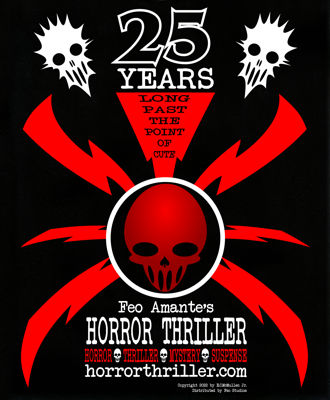 |
 |
Review by E.C.McMullen Jr. |
|
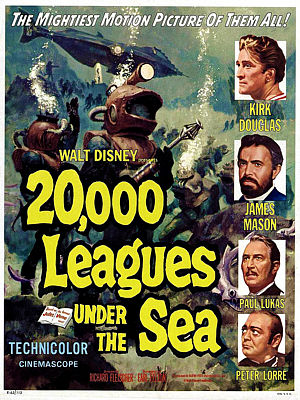
20,000 LEAGUES UNDER THE SEA- 1954USA Release: July 20, 1955 Walt Disney Productions, Buena Vista Distribution Rated: USA: N/A |
|||
In an interesting coincidence, in November, 1954, Toho Studios' GOJIRA opened with a monstrous "something" destroying a ship at sea.
In December 1954, Walt Disney Productions' 20,000 LEAGUES UNDER THE SEA also opened with a monstrous "something" destroying a ship at sea.
If you were a fan of the novel, 20,000 LEAGUES UNDER THE SEA, by Jules Verne, you knew exactly what was going on and - depending on your excitement level - were going cross-eyed with delight.
If you never read the novel or saw the movie trailers you likely had no idea what was going on.
Which is how a movie should start!
Walt Disney wanted movies from old but perennial best selling books, feeling they were a guaranteed draw on audience power alone. Like Roger Corman and many other producers, Walt also didn't want to pay the authors, and so sought out popular novels so old that the authors were dead and the copyrights were public domain.
Writer Earl Felton was known for writing successful action packed movies, "pot-boilers" as they were called in the argot of his time. Every one of them was low budget and every one was a modest success. Few writers in 1953 Hollywood had such a long string of success. Earl's movies weren't about to win any awards, but they were crowd pleasers. With Jules Verne's name on the poster, Walt himself as Producer, and a couple of fan favorite actors the movie was sure to be a hit!
There is a man who claims to be a survivor of the shipwreck, a crippled man named Old Billy (J. M. Kerigan: THE BLACK CAMEL, THE MONKEY'S PAW, MYSTERY OF EDWIN DROOD, WEREWOLF OF LONDON, THE WOLF MAN) who addresses a crowd of onlookers at the shipping port of San Francisco.
Billy's is not the first ship to be sunk in such a manner and he adds his eyewitness account to the tales of a sea monster, destroying ships and lurking in the depths.
Nobody seems to know Old Billy and not everyone believes in the Sea Monster, though something is sinking the ships and this has stopped shipping to and from San Francisco.
One of the unbelievers is a cocky whaler by the name of Ned Land (Kirk Douglas: THE LIST OF ADRIAN MESSENGER, SEVEN DAYS IN MAY, DR. JEKYLL AND MR. HYDE [1973], HOLOCAUST 2000, THE FURY, SATURN 3). Ned enters the picture all chin and brass, accompanied by two lovely women who seemed delighted by every step he takes. Ned mocks the two men on the stage, who seem out to sell snake-oil. Ned insults them, gets clobbered, a fight breaks out, and Ned walks away with his two lovely ladies while everyone else is duking it out.
Except the cops nab Ned and haul him off to jail.
Next we see all of the people in the ship's station who find that they can't get to where their going, due to all of the ships being attacked at sea.
Most of the ships are not being attacked, but that one bullet out of six isn't exactly thrilling odds.
Thwarted in his attempts to sail to Saigon, we meet Prof. Pierre Aronnax (Paul Lukas: THE KISS BEFORE THE MIRROR, SECRET OF THE BLUE ROOM, THE LADY VANISHES, THE GHOST BREAKERS, THE MONSTER AND THE GIRL, TEMPTATION) and his manservant (that's a friend you pay to keep around) Conseil (Peter Lorre: M, THE MAN WHO KNEW TOO MUCH, MAD LOVE, THE BOOGIE MAN WILL GET YOU, THE INVISIBLE AGENT, THE BEAST WITH FIVE FINGERS, ARSENIC AND OLD LACE, VOYAGE TO THE BOTTOM OF THE SEA, TALES OF TERROR, THE RAVEN, A COMEDY OF TERRORS), who are on a scientific expedition, funded by the National Museum of Paris the Professor works for. Every delay in their journey means more of their budget wasted on non-research. Half-way across the world in the 19th century, they can't even send a letter to the Museum, explaining their situation and asking for more money, as it would take weeks of living in an expensive city, in the relative safety of an expensive hotel, waiting for a response. If the Museum patrons who funded this expedition said no, Pierre and Conseil may not have enough research budget left to make it all the way back home. Let alone having to live under the scandalous cloud of failure.
Worse, the San Francisco press hound the professor, who specializes in sea life, and butter him with compliments and faux respect, then ask leading questions and outright lie about his answers in order to sell more papers.
Conseil, smelling a rat, tries to run interference for the Professor and beseeches him to be careful when talking to these journalists. Despite his education, Aronnax is too naive, too trusting of the press, who are happily destroying his reputation for a moment's byline. When one of them sketches out a sea monster that he'll falsely attribute to Pierre, the other reporters chuckle, with one saying, "Now draw wings on it."
It's under these grave circumstances that a representative of Uncle Sam offers rescue.
Mr. John Howard (Carlton Young: REEFER MADNESS, RACE SUICIDE, BUCK ROGERS [1939], THE DAY THE EARTH STOOD STILL, CRY TERROR!, NORTH BY NORTHWEST) has the authority to give Prof. Aronnax and his manservant free passage all the way to Saigon. It includes room and board and money for his trouble. The catch is, the United States warship will take a circuitous route adding 3 months to the trip. Why so long and why a warship? To find whatever it is that is attacking and sinking government and merchant vessels in the Pacific.
What if it really is an undiscovered monster of the deep? The once esteemed Professor Aronnax's advice will certainly be useful identifying such a creature and repair his damaged reputation. Once you know the beast you know its weaknesses, and where there's one there must certainly be more. That's also why they'll be travelling on a warship: to destroy whatever is killing crew and passengers in the Pacific.
That's also why they hired an experienced whaler like Ned Land, to kill the possible whale.
Via a montage (Even Rocky had a Montage), Prof. Pierre Aronnax narrates, diary-style, three and a half months of the Naval ship scouring their square of the Pacific, like many U.S. Navy ships are a doing throughout the Pacific in their own squares. Finally, Captain Farragut (Ted de Corsia: MAN IN THE DARK) stops the nonsense. As far as he's concerned, they've proven there's no monster and never was.
Prof. Aronnax correctly points out that they haven't proved or disproved anything, since something is still attacking and sinking ships and they haven't found it.
Capt. Farragut's foot is firm so at least Pierre and Conseil can continue to Saigon with their full research budget. As for Ned Land, he was promised a bonus if he killed the monster, but he never believed in it anyway and got paid to enjoy the cruise. In fact, he goes top deck to sing a song to the crew.
Once his song is over a distant ship explodes nearby. Capt. Farragut orders his ship to rescue the survivors.
Which results in them meeting what sunk the ship, which means Capt. Farragut found his monster.
As Pierre and Conseil struggle to stay afloat on a sail mast, the disabled ship staggers away without them.
Eventually Pierre and Conseil come across the monster, which is really an ironclad submarine that seems deserted. They go aboard, are amazed at it all, Ned Land pulls up, the Captain and crew of the submarine return, and that's how we meet Captain Nemo (James Mason: DEATH CELL, TERROR HOUSE, THEY MET IN THE DARK, PANDORA AND THE FLYING DUTCHMAN, LADY POSSESSED, CRY TERROR, NORTH BY NORTHWEST, JOURNEY TO THE CENTER OF THE EARTH [1959], CHILD'S PLAY [1972], THE MACKINTOSH MAN, FRANKENSTEIN: THE TRUE STORY, THE BOYS FROM BRAZIL, SALEM'S LOT) of the Nautilus.
TRIVIAActor Kirk Douglas was no singer and he never played a guitar before. He learned to do both to prepare himself for his role as Ned. Kirk who always played a tall, broad-shouldered, and muscular physique kinda guy, was mostly short and lighted to look hunky. According to Director Fleischer, he was surprised to find that Kirk, 5'8, and often shirtless in his role, had an average-sized body. James Mason, at 6 foot, really was tall, broad-shouldered, and muscular, but he felt that his character, Nemo, should look like someone made small by life's torments. So the entire movie was shot with Capt. Nemo appearing shorter and smaller than Ned, with Kirk often closer to the camera in two-shots where the men were standing, in order for Kirk to appear bigger. James Mason stayed in character as Captain Nemo whenever he was on set. In or out of character, Kirk Douglas was the Charmer, and Paul Lucas was the cut-up who kept the movie crew amused. Mason, always being Nemo, was implacable to Paul's pranks and would respond in character ("Mm-hm. Very good, Professor."). Peter Lorre enjoyed them to the point of giggle fits. However, Paul found that Douglas was confounded by his humor, often taking him literally. So Paul constantly pranked Douglas to frustration by intentionally throwing malaproprisms and other "mistakes" into his delivery, then haughtily defending them. Kirk was convinced that Lucas was losing his mind. Because of this, sometimes the anger of his character Ned, was real. Walt Disney gave considerable control to Director Richard Fleischman, who increased his chance for success by bringing on his best friend and prior teammate on his other movies, Earl Felton, to adapt the Jules Verne story. As most fans of Jules Verne can attest, he never really wrote stories. He wrote travelogue tours through his imagination, describing this, that, and the other fantastic thing, but no real story to hold it all together. It was Earl who finally realized a way to pull a story out of it all. Pierre, Conseil, and Ned are prisoners of Nemo. The movie should be a Prison Escape story. |
From here on in 20,000 LEAGUES UNDER THE SEA turns into a kind of FORBIDDEN PLANET, where Captain Nemo is their guide as he introduces them all to an undersea world they've never known.
However, he is also the man sinking ships full of innocent people. He claims he only attacks warships, then amends that by saying he also sinks ships carrying war cargo, only to amend that by saying he basically sinks whatever ships arouse his suspicions.
Naturally he has a dark and troubled reason for what he does, as do the men of his crew, but every filthy scumbag who ever lived finds reasons to justify their vile behavior, if for no other reason but that they were born sadistic so their pleasures are not their fault.
Professor Pierre Aronnax is overwhelmed by the amazing discoveries (for his time) of Nemo and the wonder of the technology he created that drives the submarine. He knows Nemo is a murderous villain but is nearly desperate to reform and absolve him so that science and thus the world can benefit from his knowledge and discoveries.
You know, like Harry Truman did with NAZI scientists after World War II and the Nuremberg trials.
Did I mention that Aronnax is naive where human behavior is concerned?
Conseil and Ned Land aren't as school educated as Pierre, but they also haven't lived their lives cloistered in Universities and Museums where you are rigorously taught to memorize and repeat, as tools for navigating life when you leave.
Pierre is a man in his early 60s who never left academia. He never used the tools he memorized. This research trip, late in his life, is his first exposure to the real world and on land or sea he's out of his depth.
As for Conseil and Ned they've experienced the world and humanity first hand and know a "Mad Dog" when they see one.
As the only foils to Capt. Nemo, Conseil, who will restrain himself to protect Prof. Aronnax, and Ned, who is barely restrained as he constantly defends himself, are up against a man who has both the professor Pierre's education as well as their life experience.
Director Richard Fleischer (FANTASTIC VOYAGE, THE BOSTON STRANGLER, SEE NO EVIL, SOYLENT GREEN, AMITYVILLE 3D, CONAN THE DESTROYER, RED SONJA) was the son of Max Fleischer, the animation impresario who was Walt Disney's chief competition and, according to Richard, bitter rival back when most of Walt's output was short animated films.
However, Walt produced two feature films prior to 20,000 LEAGUES UNDER THE SEA that starred then top child actor, Bobby Driscoll (who won an Oscar in 1950). According to Richard, Walt said, "Well, I saw a film you directed called Happy Time and all I can tell you is, anyone who can make an actor out of Bobby Driscoll has to be a great director."
20,000 LEAGUES UNDER THE SEA would be Richard's biggest budget, he would be working with big A-List actors for the first time, and what's more, it would be shot in Cinemascope, which Richard had never used but was eager to learn. But he first felt obliged to ask his father's persimmon permission.
Richard's father was more than pleased that his chief rival, Walt, felt he could do no better for the director of his most expensive live action Cinemascope movie, than hire Max's son.
Richard would go on to be an accomplished director, able to create hit movies with medium to low budgets from expensive scripts that had languished in development hell and were considered, like the once A-List actors in them, "Past their Prime". Thus he earned a reputation as a "Ringer". If anyone can make this movie a hit, Richard can!
After 20,000 LEAGUES UNDER THE SEA Richard went on to create what would become iconic movies of cinema, before a severe career misstep cut him down. Contracts completed were not renewed. Opportunities dried up and, a still talented man, he ended his days with a string of low budget movie sequels that wound up being box office poison. The fact that the movie that torpedoed him was also a box office disaster ended a once brilliant career that an unmerciful Hollywood history has long obscured.
Still, 20,000 LEAGUES UNDER THE SEA is arguably the best of Richard's work, was one of Kirk Douglas' favorite movies that he ever made, remains as one of the best live action movies that Disney ever produced, and is unquestionably the best adaptation of any Jules Verne's novel - even after 70 years.
4 Shriek Girls




This review copyright 2024 E.C.McMullen Jr.

|
| DRESS NICE | |
| YOU MAY ALSO ENJOY | |||
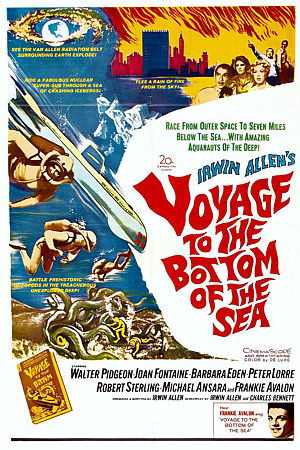 |
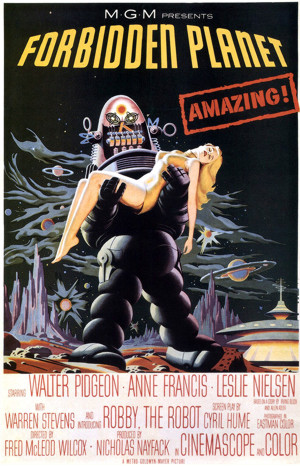 |
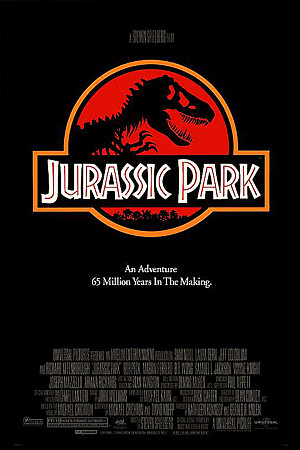 |
|
| VOYAGE TO THE BOTTOM OF THE SEA MOVIE REVIEW |
FORBIDDEN PLANET MOVIE REVIEW |
JURASSIC PARK MOVIE REVIEW |
|
FEO AMANTE'S HORROR THRILLERCreated by:E.C.McMullen Jr. FOLLOW ME @ |
| Amazon |
| ECMJr |
| Feo Blog |
| IMDb |
| Stage32 |
| X |
| YouTube |
| Zazzle Shop |
